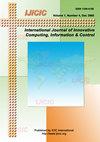Drone Aerial Image Identification of Tropical Forest Tree Species using the Mask R-CNN
IF 1.1
Q4 COMPUTER SCIENCE, ARTIFICIAL INTELLIGENCE
International Journal of Innovative Computing Information and Control
Pub Date : 2022-11-20
DOI:10.11113/ijic.v12n2.381
引用次数: 1
Abstract
Tropical forests have a wide variety of species and support environmental activities. The drone's image resolution is 90% more accurate than satellite data. It boosted productivity, safety, and the capacity to make better decisions by comparing archived and prospective images. Labeling tree species in heavily forested locations is labor-intensive, time-consuming, and expensive. This research seeks to design a new model for classifying tree species based on drone imagery, then test and assess its effectiveness. This study shows that drone technology can diminish productivity per hectare compared to conventional ground approaches. The study shows drones are more productive than ground approaches. The approach is feasible since it targets commercial timber species in the forest's higher stratum. Drones are cheaper than satellite data, therefore they're being used more in forest management and deep learning. Drones allow flexible, high-resolution data collection. This research uses Mask R-CNN to recognize and segment trees. This study uses high-resolution RGB images of tropical forests. The mAP, recall, and precision all performed well. Our suggested method yields a solid prediction model for detecting tree species, validated by 75% of ground truth data. This strategy can help plan and execute forest inventory, as shown. This initiative's success may lead to the first phase of a forest inventory, affecting the region's logging and forest management.基于R-CNN掩模的热带森林树种无人机航拍图像识别
热带森林有各种各样的物种,并支持环境活动。无人机的图像分辨率比卫星数据精确90%。它提高了生产率、安全性,并通过比较存档图像和预期图像做出更好决策的能力。在森林茂密的地区给树种贴上标签是一项劳动密集型、耗时且昂贵的工作。本研究旨在设计一种基于无人机图像的树种分类新模型,然后测试和评估其有效性。这项研究表明,与传统的地面方法相比,无人机技术可以降低每公顷的生产力。研究表明,无人机比地面方法更有效率。这种方法是可行的,因为它针对的是森林较上层的商业木材品种。无人机比卫星数据便宜,因此它们被更多地用于森林管理和深度学习。无人机可以灵活、高分辨率地收集数据。本研究使用Mask R-CNN对树木进行识别和分割。这项研究使用了热带森林的高分辨率RGB图像。mAP、召回率和准确率均表现良好。我们建议的方法产生了一个可靠的预测模型,用于检测树种,并得到75%的地面真实数据的验证。这种策略可以帮助规划和执行森林清查,如下所示。这一举措的成功可能导致森林清查的第一阶段,影响该地区的采伐和森林管理。
本文章由计算机程序翻译,如有差异,请以英文原文为准。
求助全文
约1分钟内获得全文
求助全文
来源期刊
CiteScore
3.20
自引率
20.00%
发文量
0
审稿时长
4.3 months
期刊介绍:
The primary aim of the International Journal of Innovative Computing, Information and Control (IJICIC) is to publish high-quality papers of new developments and trends, novel techniques and approaches, innovative methodologies and technologies on the theory and applications of intelligent systems, information and control. The IJICIC is a peer-reviewed English language journal and is published bimonthly

 求助内容:
求助内容: 应助结果提醒方式:
应助结果提醒方式:


